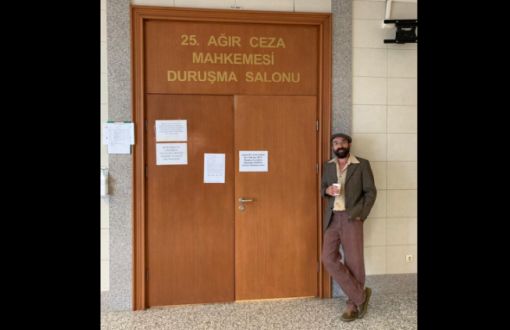Journalist, documentary photographer Fatih Pınar acquitted of #NewrozPirozBe

* Photo: Altyazı Fasikül: Özgür Sinema, Twitter
Click to read the article in Turkish
* The Diyarbakır Newroz video of Fatih Pınar (2014)
Standing trial for sharing a photo that he took under the hashtag #NewrozPirozBe (Happy Newroz), journalist and documentarian Fatih Pınar was acquitted by the court in the hearing today (October 7).
After Pınar took a photo during the Newroz celebrations in Turkey's Kurdish-majority southeastern province of Diyarbakır in 2014 and shared it on social media under the hashtag #NewrozPirozBe, he faced a lawsuit where he was charged with "propagandizing for a terrorist organization."
Fatih Pınar has been acquitted of the offense charged.
About Fatih Pınar
He did photo interviews for monthly geography magazine ATLAS, he went to Palestine on the first days of the Second Intifada in 2002. He photographed Iraq's occupation by the US in 2003.
He produced 11 multimedia works, photo interviews on İstanbul for the NTVMSNBC news portal. He published a series of photo interviews on bianet regarding the towns of İstanbul to undergo urban renewal.
He gave training and workshops on photo interviews in Fototrek photography training center. In addition to ATLAS, he also worked for Skylife, The Gate, Türkish Geo and İstanbul magazines.
His photographs were published in a series of newspapers and magazines in the US and Europe, such as Sunday Telegraph, French Geo, Ny Times, Der Spiegel, Stern, Passport Magazine, Le Parisien, Le Point and Glamour.
|
What is Newroz? Newroz refers to the celebration of the traditional Iranian peoples' New Year holiday of Nowruz in Kurdish culture. Before the Islamization of the Iranic peoples in Asia, the ancestors of the modern Kurds followed Zoroastrianism. In Zoroastrian doctrine, fire is a symbol of sight, goodness and purification. Angra Mainyu, the demonic antithesis of Zoroastrianism, was defied by Zoroastrians with a big fire every year, which symbolized their defiance of and hatred for evil and the archdemon. Newroz is mainly, in the modern age, affiliated with Kurds, who in turn make up the majority of the Alevi population, an Islamized version of the Zoroastrian religion. In Kurdish legend, the holiday celebrates the deliverance of the Kurds from a tyrant, and it is seen as another way of demonstrating support for the Kurdish cause. The celebration coincides with the March equinox which usually falls on 21 March and is usually held between 18 and 24 March. The festival has an important place in terms of Kurdish identity for the majority of Kurds, mostly in Iraq, Turkey and Syria. Though celebrations vary, people generally gather together to welcome the coming of spring; they wear coloured clothes and dance together. *Source: Wikipedia |
(AS/SD)



